A Cop Who Killed A San Diego College Student In 1986 Gave ‘Safety Tips’ In A TV News Ride-Along Days Later
This is an excerpt from our true crime newsletter, Suspicious Circumstances, which sends the biggest unsolved mysteries, white-collar scandals and captivating cases straight to your inbox every week. Sign up here.
On the night of Dec. 27, 1986, a San Diego college student called her parents from her boyfriend’s place to let them know she was on her way home. They never saw her again, but the scratches she left on her killer’s face were seen by thousands of unwitting viewers of a local TV news segment two nights later.
Four decades later, the shocking circumstances of 20-year-old Cara Knott’s murder — and the chilling way her killer was caught — continue to haunt the Southern California community where they lived.
At the time of her death, Knott was a junior at San Diego State University studying to be an elementary school teacher. Her father described her as an environmentalist, animal lover and a skilled artist. In a yearbook photo shared widely after her death, Knott’s soft blonde hair falls past her shoulders, feathered in the style made popular by the actor Farrah Fawcett.
Knott spent the days after Christmas with her boyfriend, who was sick with the flu. On the 27th, she called her family to let them know she was about to head home. The drive from her boyfriend’s Escondido home typically took 40 minutes, much of it a straight shot south on Interstate 15.
When Knott, unfailingly prompt and communicative, didn’t arrive, her family grew uneasy, and then, as the minutes passed, became alarmed. If Knott had access to a pay phone, they were certain she would’ve called to explain her lateness. Had she been in an accident? Did her car, a 1968 Volkswagen Beetle, break down?
The Knotts called the police — four local law enforcement agencies, in fact — but aside from confirming there had been no reports of an accident involving a Volkswagen, they failed to take a missing persons report or investigate. Her mother called local hospitals, but no one resembling her daughter had been admitted.
So the extended Knott family went out to look for her themselves. All night, they retraced the route she would have taken, driving on freeways and off-ramps, scanning parking lots and construction sites for signs of her car.
Just before dawn, Knott’s sister and her husband spotted her white Beetle parked on a deserted cul-de-sac near the Mercy Road exit of Interstate 15. Through the open driver’s side window, they could see the keys in the ignition, a Chevron gas card and receipt on the passenger seat, and her belongings in the back.
But Knott was nowhere to be seen. They rushed to a pay phone to call the police. This time, the law enforcement agencies responded.
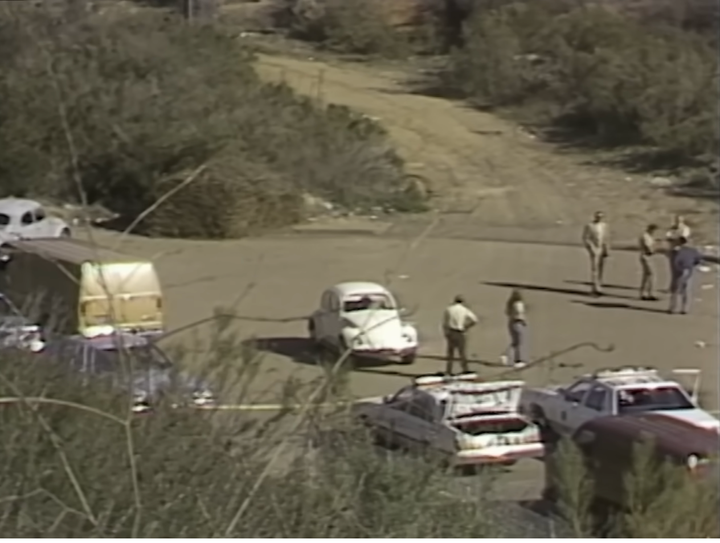
Investigators converged on the scene and launched a search of the area. It didn’t take long for them to find Knott’s body, which was lying in a nearby ravine below a 65-foot bridge. She was fully dressed, still wearing the purple sweatsuit and white leather boots her boyfriend had last seen her wearing.
Authorities would later determine she had been strangled by some kind of ligature. An autopsy found no evidence to indicate she had been sexually assaulted.
The unexplained killing set residents of San Diego County on edge. In response, a local news station filmed a ride-along segment with a California Highway Patrol officer, who offered safety tips for stranded motorists. Craig Peyer, a respected 13-year CHP veteran, shared advice while driving his usual route along the I-15 corridor — coincidentally, the same route Cara Knott would have followed two nights earlier.
Peyer seemed like a model police officer, affable and professional. But viewers noticed something odd: visible scratches on his clean-shaven face.
But the scratches, which Peyer later said were the result of falling into a chain-link fence, were not what spurred San Diego law enforcement agencies to investigate one of their own.
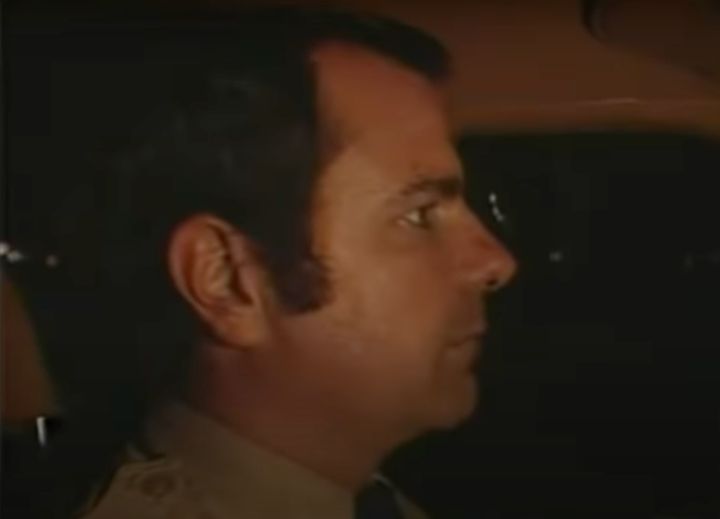
After the news segment aired, dozens of young women called the police, all reporting unnerving encounters they had with Peyer in traffic stops that summer and fall. Not only did many of the callers resemble Knott in appearance and age, but they drove small cars. Seven of the women stopped were driving Volkswagen Beetles, the same model as Knott’s car.
The women said Peyer, then 36, had stopped them at night, often for trivial offenses, and directed them to exit the freeway at Mercy Road — even if it meant reversing on the freeway against traffic to do so — and drive to the bottom of the secluded, unlit off-ramp. There, Peyer detained them for as long as 90 minutes, chatting and asking them personal questions before letting them resume their drive.
Knott wasn’t so lucky. Her car remained at the spot where Peyer had stopped so many women before her, until authorities towed it away.
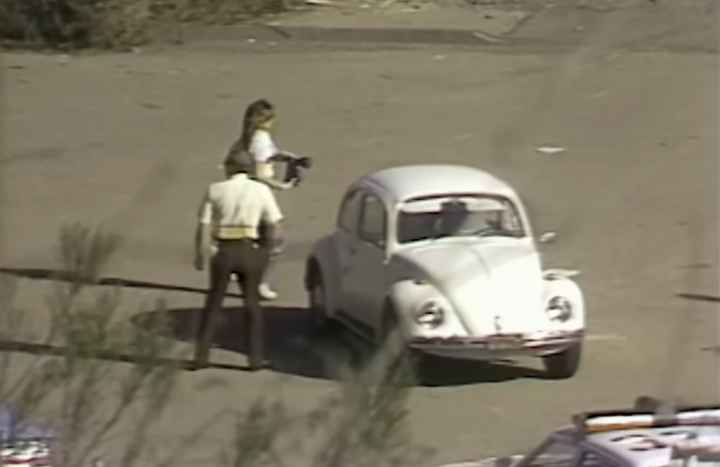
The women’s calls after the news segment weren’t the first time CHP had learned of Peyer’s unorthodox traffic stops at Mercy Road. Two relatives of women who had been detained by Peyer called to complain about the unusual nature and location of his stops, but CHP officials dismissed them. In fact, Peyer was commended by his superior for a strategy he believed could avoid potentially dangerous stops on the freeway.
But as the women’s accounts were made public, rank-and-file officers and their superiors questioned Peyer’s sterling reputation. Homicide investigators soon collected enough evidence to arrest Peyer. He was taken into custody on Jan. 15, 1987, and charged with first-degree murder.
Authorities believed Peyer killed Knott sometime after 9 p.m. After leaving her boyfriend’s house, Knott stopped for gas at a Chevron station just off I-15, about 10 miles north of where her body would be found. A clerk at the station said he saw her pull in, purchase gas and leave, heading toward the southbound on-ramp. The owner said transaction records showed the time as around 8:30 p.m.
At 9:30 p.m., an attendant at another gas station located about 7 miles south of the Mercy Road off-ramp said she saw Peyer pull in. She noticed he “seemed nervous, disheveled and had scratches on his face.”
When she asked how he was, the attendant said Peyer responded by saying it had been “a rough night.”
Even Peyer’s wife said that she saw scratches on his face when he got home from work later that night.
Questions were raised about Peyer’s timeline. Two brothers said Peyer had pulled them over for speeding at around 10 p.m., but on their ticket he crossed out the original, accurate time and changed it to 9:20 p.m., essentially giving himself an alibi for the time investigators believed he had strangled Knott and heaved her body over the bridge.

It’s not clear why Peyer attacked Knott after letting so many other women go. Maybe she vocally objected to being detained for long. After all, she knew her family was expecting her, and in the era before cellphones, she had no way of contacting them. She could have rejected an advance or threatened to report him, and he might have believed his career or reputation were in jeopardy.
Whatever his motive, prosecutors said when the case went to trial, Peyer attacked Knott, who tried to defend herself by scratching at his face, a tactic her mother said she had learned in self-defense classes the two had taken together. During the trial, which began in early 1988, prosecutors suggested Peyer had struck Knott with his CHP flashlight before strangling her. They presented to the jury large graphic photos of her injuries, aligning the flashlight over a bruise above her right eye.
Authorities believed Peyer then used a rope found in the trunk of his patrol cruiser to strangle Knott. The pathologist who performed Knott’s autopsy testified that the ligature marks on her neck were the same width — about three-eighths of an inch — as Peyer’s rope.
Blood and fiber evidence also implicated Peyer, prosecutors said. Purple fibers from Knott’s sweatpants matched those retrieved from Peyer’s gun belt, his boot, and the bridge where he disposed of her body.
Prosecutors also said that fibers found on one of Knott’s hands matched those from his uniform jacket. Authorities also connected a gold thread found on her clothes to Peyer’s CHP patch.
Blood found on one of Knott’s boots and her purple sweatshirt matched Peyer’s blood type, a police criminalist and blood expert testified.
But jurors questioned the credibility of two witnesses who testified that they had seen a CHP cruiser stop a VW Beetle on the Mercy off-ramp on the night she was killed.
After deliberating for seven days, the jury was deadlocked, with seven of the 12 jurors voting to convict.
The judge declared a mistrial in February 1988, and Peyer remained free on bail.
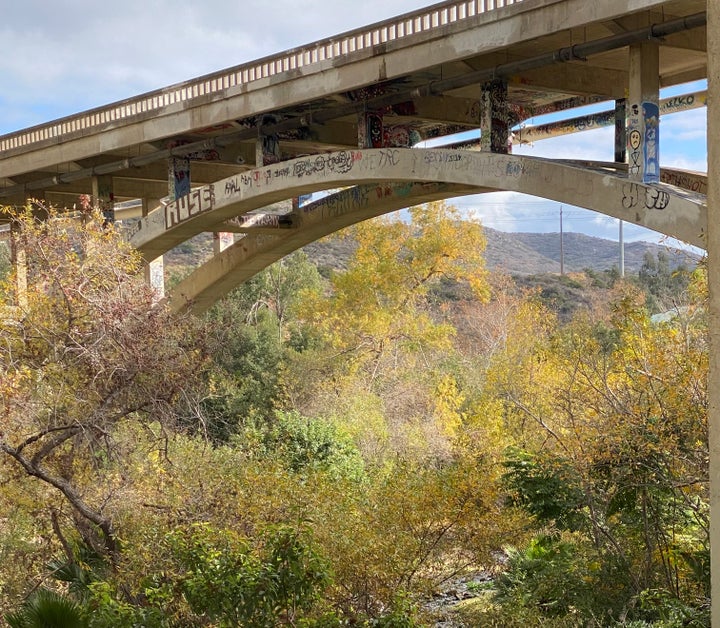
Drusilla Moorhouse/HuffPost
The Knott family, among others, complained that the first trial was disorganized and confusing. For Peyer’s second trial, which began just a few months after the first, the DA brought in a new prosecutor, who presented new evidence and new witnesses. This time, in June 1988, jurors reached a verdict: guilty.
Peyer didn’t testify in his own defense or speak at his sentencing hearing, and he has continued to maintain his innocence. In 2004, he reportedly rejected an offer by the San Diego County district attorney’s office to test the DNA evidence in his case as part of a wrongful conviction program.
Sam Knott died on Nov. 30, 2000, at the age of 63. In an ironic twist of fate, he suffered a fatal heart attack not far from where his daughter was killed after tending to a small memorial garden he had dedicated to her.
The oak saplings Sam Knott planted have grown into a small grove of trees, each trunk circled by colorful memorials to other victims of violent crimes, lost loved ones and missing persons. The largest memorial is to Cara Knott, its original namesake, and a bench dedicated to her father sits nearby. The byway leading to the garden and running parallel to I-15 is named Cara Way.
At his sentencing hearing back in August 1987, Sam Knott said that Peyer had been “hiding behind his badge and breaking his sacred trust to society.”
“Cara was innocent,” Knott said, “and she was special.”
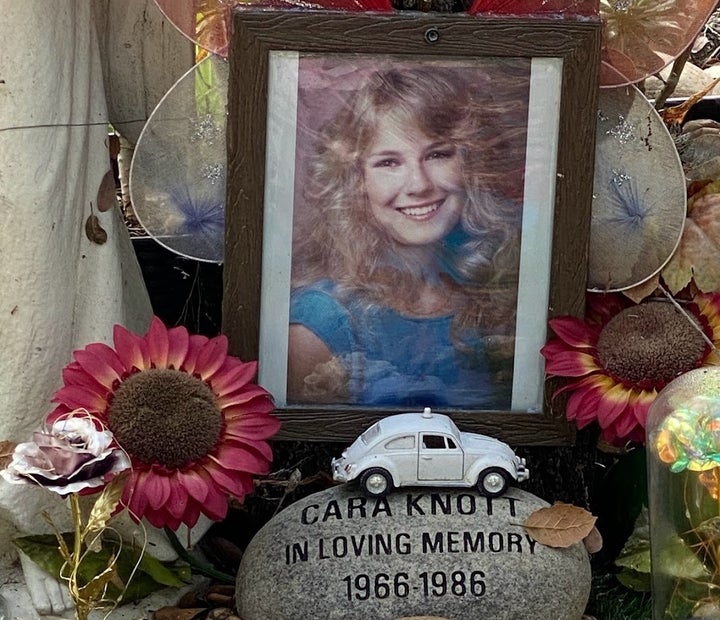
Drusilla Moorhouse/HuffPost
Support HuffPost
The Stakes Have Never Been Higher
Source link


